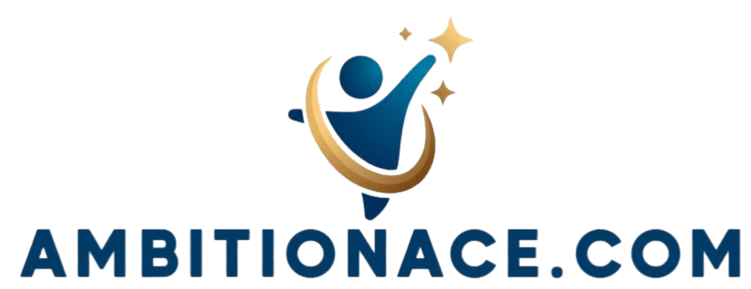How to Prioritize Tasks Effectively
In today s fast-paced world, mastering the art of prioritizing tasks is essential for achieving both your personal and professional goals.
Effective prioritization boosts your productivity and alleviates stress, allowing you to focus on what truly matters.
This article delves into various methods and tools designed to help you categorize tasks, manage your time efficiently, and cultivate a productive work environment.
With practical tips for staying organized and minimizing distractions, you ll be empowered to reassess your priorities and unlock your full potential.
Jump in now to transform your task management skills today!
Contents
- Key Takeaways:
- The Importance of Prioritizing Tasks
- Methods for Prioritizing Tasks
- Tools for Prioritizing Tasks
- Tips for Staying Organized and Focused
- Evaluating and Adjusting Priorities
- Frequently Asked Questions
- What does it mean to prioritize tasks effectively?
- Why is it important to prioritize tasks effectively?
- How can I determine which tasks are the most important?
- What is the difference between urgent and important tasks?
- How can I effectively prioritize tasks when everything seems urgent?
- How often should I review and adjust my task priorities?
Key Takeaways:

- Prioritization is key to being productive and successful in any task.
- Time management techniques and task categorization strategies can help prioritize tasks efficiently.
- Creating a productive work environment and dealing with distractions and procrastination are key to staying organized and focused on priorities.
The Importance of Prioritizing Tasks
Effectively prioritizing tasks is a fundamental skill for successful personal and professional management. Understanding the key factors to consider in task prioritization greatly influences your productivity and helps you achieve your goals.
By differentiating between what is important and what is urgent, you can allocate your time and energy wisely. This helps you meet deadlines without sacrificing quality.
Understand your responsibilities clearly and be flexible in using tools like the Eisenhower Matrix to prioritize effectively. Additionally, learning how to use Kanban for task prioritization can further boost your productivity and help you stay organized.
This refined approach sharpens your focus by reducing the mental clutter from multitasking. It also ensures your resources are used effectively.
Why Effective Prioritization Matters
Effective prioritization is essential, as it brings clarity to which tasks demand your immediate attention, optimizing the organization of your workday. Understanding the science behind task prioritization can help improve your efficiency.
By systematically identifying high-impact activities, you can channel your energy toward initiatives that produce significant results. For example, as a marketer, prioritizing client follow-ups over administrative tasks can lead to improved sales and stronger relationships.
Similarly, in your personal life, tackling family commitments before less critical errands helps foster a more harmonious home environment. This approach enhances your overall productivity and satisfaction in both your personal and professional spheres.
Methods for Prioritizing Tasks
You have access to several effective methods for prioritizing tasks that can significantly enhance your management and organization. Techniques such as the ABCde method, the Eisenhower Matrix, and David Allen’s Getting Things Done highlight the role of prioritization in time management by providing structured approaches to categorize your tasks based on urgency and importance.
These methodologies improve your time management and enable you to evaluate your workload efficiently. This ensures that critical tasks are completed both timely and effectively.
Time Management Techniques
Time management techniques like the Pomodoro Technique, time blocking, and effective scheduling can significantly elevate your focus and productivity throughout the workday.
These strategies allow you to break your tasks into manageable segments and prioritize effectively. For instance, the Pomodoro Technique encourages you to engage in short bursts of focused activity followed by brief breaks, which helps maintain mental clarity and prevents burnout.
On the flip side, time blocking assigns specific time slots for different tasks, fostering a disciplined work ethic. Integrating these techniques into your daily routine can be as straightforward as setting a timer for focused work sessions or creating a weekly calendar that clearly outlines your goals.
Embrace these methods to build better habits for a more organized and efficient work environment.
Task Categorization Strategies

Utilizing task categorization strategies, such as the urgent-important matrix a way to categorize tasks by urgency and importance can significantly streamline your task assessment process. This ensures that your critical priorities are addressed first.
This method helps you distinguish between what demands immediate attention and what can be scheduled for later. It also enhances your focus on long-term goals. By dividing tasks into four distinct quadrants urgent and important, important but not urgent, urgent but not important, and neither urgent nor important you can allocate your time and resources more effectively.
Applying this matrix with intention declutters your to-do list and promotes productivity by allowing you to focus on activities that deliver the most significant results. Ultimately, this approach boosts your efficiency and helps you maintain a balanced workflow.
Tools for Prioritizing Tasks
You have a wealth of tools at your disposal for prioritizing tasks, whether you lean toward digital applications or prefer the charm of analog systems. Each option enhances your task management and visibility.
Apps that help you organize tasks, like Teamwork.com and various productivity apps, offer intuitive interfaces that make tracking tasks, deadlines, and collaborative projects easy. Conversely, analog tools such as planners and to-do lists provide a tactile experience that can boost your focus and organization.
Choosing the right tool is essential for mastering the art of effective task prioritization.
Digital and Analog Options
Digital and analog options for task management bring distinct advantages that can elevate your organization and sharpen your prioritization skills.
As you navigate the whirlwind of daily responsibilities, task management apps can transform how you tackle your to-do lists. These digital solutions often come equipped with reminders, collaborative features, and calendar integration, all designed to streamline your workflows and enhance productivity.
On the other hand, using planners offers a tactile experience that many find invaluable. The simple act of writing down tasks boosts your memory retention and instills a satisfying sense of accomplishment.
Ultimately, each method caters to different preferences: digital tools shine in their flexibility and accessibility, while analog systems provide a focused, distraction-free environment. Both can guide you toward greater clarity and focus amid the busyness of life.
Tips for Staying Organized and Focused
Staying organized and focused is essential for enhancing productivity in both personal and professional realms. Several strategies can guide you toward achieving this balance. Establishing a dedicated workspace free from distractions, utilizing effective organizational tools, and following a structured schedule can markedly improve your concentration and efficiency.
Integrating regular breaks for reflection and adjustments helps sustain your energy levels and maintain focus throughout the workday.
Creating a Productive Work Environment
A productive work environment can supercharge your focus and productivity! To achieve this, pay attention to several key elements that significantly contribute to the atmosphere.
Proper workspace organization plays a vital role; keeping your desk clutter-free clears your mind, enabling you to tackle tasks with efficiency. Ambient conditions, such as lighting and acoustics, can directly influence your concentration levels.
To address potential distractions, it’s beneficial to establish boundaries. This could mean using noise-canceling headphones or setting specific work hours. Personalizing your workspace with elements like plants, artwork, or comfortable seating can inspire creativity and motivation. Transform your space into one that reflects your preferences while promoting optimal focus.
Dealing with Distractions and Procrastination

Navigating distractions and procrastination is crucial for enhancing your focus and productivity. Employing targeted strategies empowers you to overcome these hurdles.
Common distractions like incessant smartphone notifications, a noisy environment, or even the chatter in your mind can easily disrupt your concentration. This disruption can lead to inefficient work and heightened stress levels.
To tackle these interruptions, establish a dedicated workspace that minimizes noise and visual clutter. Building a routine that includes regular breaks can further enhance your focus, allowing your mind to recharge effectively.
Consider techniques like the Pomodoro Technique, where you work in short, focused bursts followed by brief intervals of rest. This approach helps you maintain momentum and keeps distractions at bay. By consciously adjusting your habits and creating a supportive environment, you can dramatically cut down distractions and boost productivity!
Evaluating and Adjusting Priorities
Evaluating and adjusting your priorities is an ongoing journey that demands regular assessment and a clear understanding of your goals and tasks. This practice helps you focus on what truly matters, ensuring your time and effort are allocated effectively.
By routinely reviewing your task lists and timelines, and making necessary adjustments based on performance and evolving circumstances, you sustain productivity and pave the way for long-term success.
How to Reassess Your Tasks
Reassessing and re-prioritizing your tasks is essential for adapting to changing circumstances and maintaining clarity throughout your workday.
Taking the time to evaluate your daily objectives can significantly boost your focus and productivity. In today’s fast-paced work environment, what felt important yesterday may not carry the same weight today.
To effectively reassess, consider employing techniques like time-blocking or the Eisenhower Matrix, which helps you differentiate between urgent and important tasks.
Embracing flexibility helps you adjust your priorities and fosters a proactive mindset. This adaptability leads to a more organized workflow, creating an environment where efficiency thrives and overwhelming situations are navigated with ease.
Frequently Asked Questions
What does it mean to prioritize tasks effectively?
Prioritizing tasks effectively means organizing and ranking your tasks in order of importance and urgency. Learning how to prioritize your daily tasks ensures that you focus your time and energy on the most crucial tasks first.
Why is it important to prioritize tasks effectively?

Prioritizing tasks effectively helps you manage your time more efficiently. By learning how to prioritize when working on multiple projects, you ensure that you complete the most important tasks in a timely manner, reduce stress, and stay focused on what truly matters.
How can I determine which tasks are the most important?
One way to determine task importance is by considering the impact of not completing a task. If it has serious consequences or significantly affects your goals or responsibilities, it should be high on your priority list.
What is the difference between urgent and important tasks?
Urgent tasks require immediate attention or have a strict deadline, while important tasks contribute to your long-term goals and overall success. Some tasks may be both urgent and important, and those should take priority over all others.
How can I effectively prioritize tasks when everything seems urgent?
When everything seems urgent, it’s important to step back and evaluate each task’s true urgency and importance. Use tools like the Eisenhower Matrix to categorize tasks and refer to learning to prioritize to determine which ones are the most crucial and should be tackled first.
How often should I review and adjust my task priorities?
It’s helpful to review and adjust your task priorities daily or weekly, depending on your workload. As circumstances change and new tasks arise, mastering prioritization for effective leadership ensures you focus on the most important tasks.
Now that you understand task prioritization, take action and organize your tasks today!






